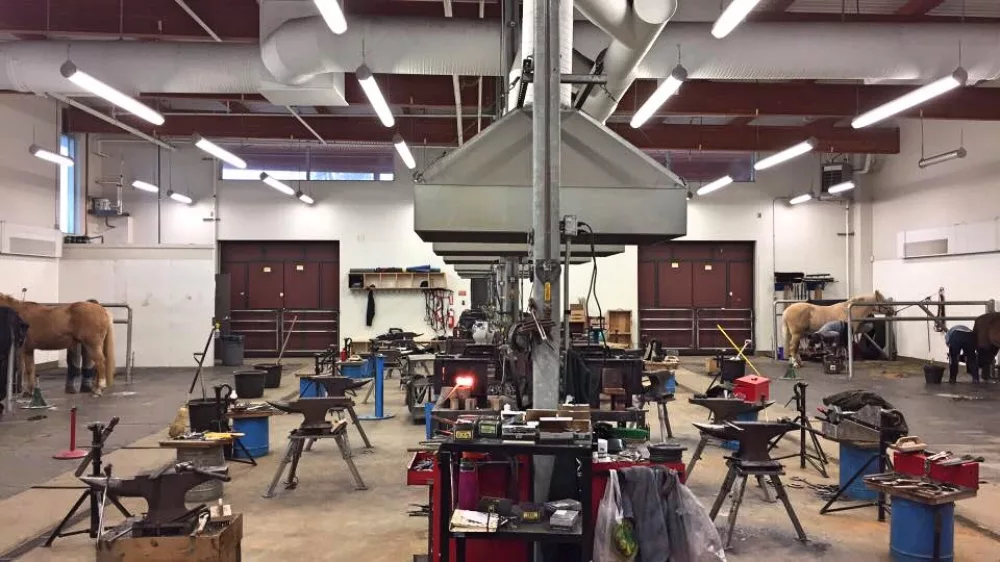A pair of unrelated events has slowed the bid to regulate farriers in British Columbia, but progress continues in the push to establish a national farrier apprenticeship program in Canada.
The global coronavirus pandemic has created a logjam in many governments, and western Canada is no exception. However, a personnel change in the provincial government has compounded the process, leaving the Western Canada Farriers Association in limbo.
“The assistant deputy minister [ADM] of agriculture who has been looking after the animal health care regulation file has changed positions and we now have a new assistant deputy minister,” says Will Clinging, vice president of the WCFA. “We are not sure what this means for our cause as there has been no conversation yet with the new ADM. The COVID crisis seems to have effectively shut down anything that is not directly related to the pandemic. So, we sit and wait.”
The WCFA and a combined group of non-veterinary animal health care providers proposed in 2018 the creation of a voluntary registry after the British Columbia Animal Owners Association voiced concerns that service providers are operating under the threat of legal recrimination from the College of Veterinarians of British Columbia. Services such as farriery, massage therapy, homeopathy, acupuncture, chiropractic and others are targets of a provincial law that forbids animal health care unless it is performed by a veterinarian. The registry would establish education standards, best practices, a code of ethics, interdisciplinary behavior actions and other regulations under one governing body.
To help pave the way for setting an educational standard, the WCFA is spearheading a national farrier apprentice program.
“We are waiting for federal approval for the name of our new national association: the Association of Farrier Training of Canada, Association des Maréchaux-Ferrants Formateurs du Canada [AFTC/AMFC],” Clinging says. “Once the names are approved, we have already prepared the bylaws and constitution for approval by the board of directors.”
The AFTC/AMFC will be governed by eight directors. Each regional farrier association — Ontario Farriers Association, Quebec Farriers Association, and Atlantic Farriers Association — will be represented equally. A president, vice president, secretary and treasurer will round out the governing body.
“We will help connect apprentices with training farriers and training farriers with apprentices,” Clinging explains. “We will create and administer a designated curriculum for each of the 3-year apprenticeship. We will provide standards for testing and hold exams to test apprentices at the end of each year of their apprenticeship.”
After completing 3 years, an apprentice must successfully complete an exit exam before earning an accreditation.
“We hope [it] will be recognized as equal by the [American Farrier’s Association] certification or [Worshipful Company of Farriers] testing,” Clinging says. “We also hope to offer Canadian Accreditation to farriers as an alternative to the AFA certification or WCF testing.”
Further details of the program are still being worked out, but progress is being made, says Gerard Laverty, instructor of the Kwantlen Polytechnic University (KPU) Farrier Program in Surrey, British, Columbia.
“Since the early Spring, we have had a group of farriers across the country meeting online every 2 weeks to discuss what a national farrier apprenticeship would look like,” he says. “It will be a voluntary program that a person will have to qualify to enter. Once we have the details sorted out and presented it to each of the Canadian associations, we will make an announcement. I expect that should happen sometime over the winter.”
Earlier this year, Laverty revamped KPU’s 30-week program to include 360 hours of built-in practicum and another 1 ½ months of field work.
“I designed it with an eye toward eventually having a full-blown apprenticeship for farriers in Canada,” he says. “The student will be going out for 6 weeks with a farrier in the field after 16 weeks of being in the shop here to get those basic skills so that they can pull shoes, clinch, finish off nailing and maybe do a barefoot trim.”
In light of the pandemic, a portion of the program was transitioned to online learning when necessary.
“We’ve moved as much of the theory as possible into an online format,” Laverty told KPU’s student newspaper The Runner, noting that hands-on, in-person study will begin in November. “We are fortunate that the shop is big enough that with a reduced class size, I don’t think space is going to be a challenge at all.”







